¶ Agrimar the Dirt-Dweller
Alignment: Neutral Good
Symbol: A stone rod or staff, plain vestments caked in dirt
Portfolios: Nature Below, Dirt, Druids, Caves, Ungart Dwarves, good subterranean peoples
Titles: Deific Dwarf of the Dirt, Agrimar Ungart
Domains: Nature, Life
Doctrine: Stay underground where it’s safe and sacred, enjoy nature and protect it from those that would exploit it (especially underground) heal those that need it, educate surface dwellers of the glories of living underground, stay dirty. Don’t trust the trees.
A deity arising from the Reordinance, it is said that Agrimar was a traveling companion to Ahasitari, and they aided each other before their Apotheosis during the Reordinance of St. Dumon. Upon the death of the former Goddess of Nature Primeva, he agreed to take up the portfolio of Nature. Having never been truly comfortable with above-ground environments, he more recently agreed to split the domain of Nature, giving over the surface flora and fauna to the newly arisen deity Waldan O’th Woods, while keeping subterranean environments for himself. He appears as a dirty, gruff dwarf, beard matted with mud. A gentler deity than his predecessor, he spends much of his time looking after those that make their homes or livings beneath the earth in the rock and dirt.
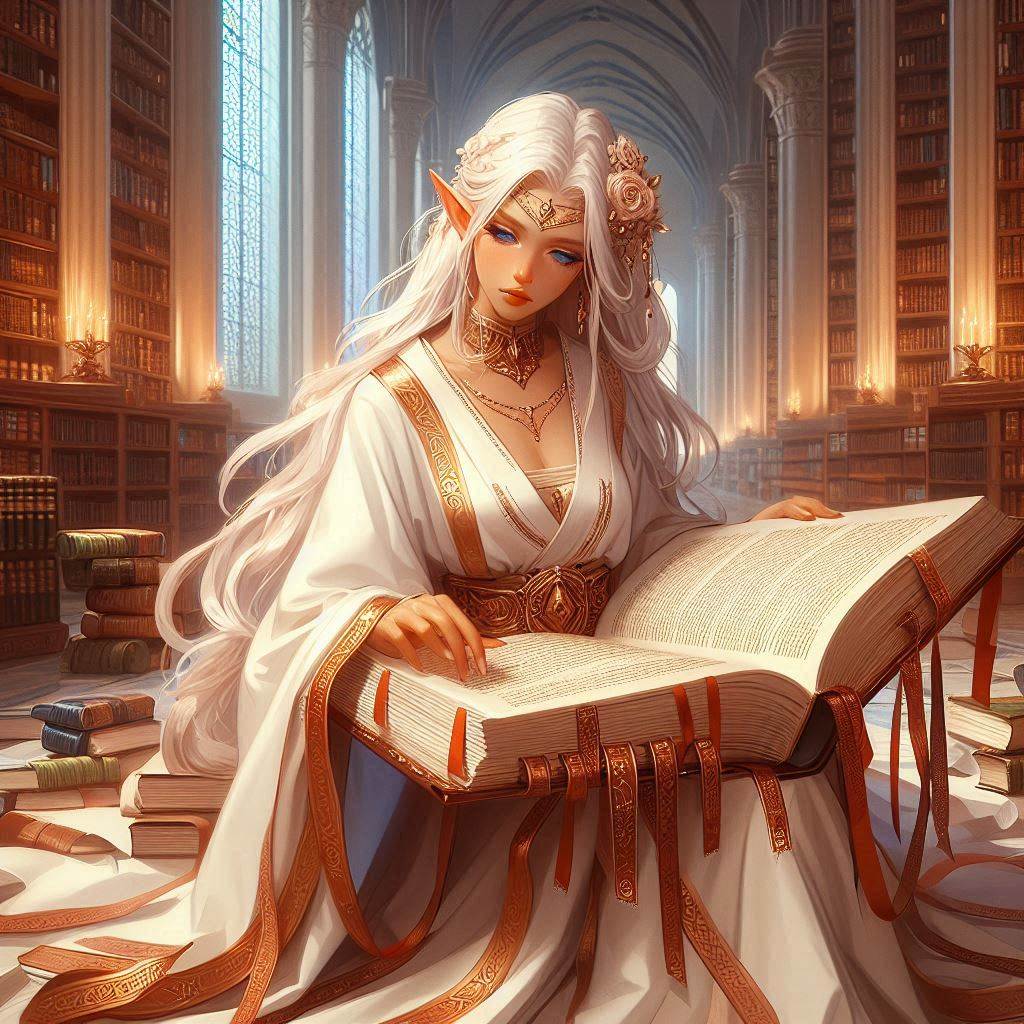
¶ Ahasitari Swansong
Alignment: Neutral Good
Symbol: A giant tome of Law, trailing a multitude of bookmarks, ribbons, and addendum.
Portfolios: Law and Justice, patron of judges, lawmen, lawmakers, and rulers.
Titles: Lady Justice, Spirit of the Law, the Righteous Reformer, the White Lady
Domains: Knowledge, Light, Protection
Doctrine: Create, follow, and amend the law in the service of the people it governs
Legend says that Ahasitari was a mortal elven/dragonborn lawyer whom used Principius Maximus’s own corrupt laws against him to bind him, strip him of his stolen godhood, reveal him to be the archdevil that he was, and cast him down. Afterward, she acquired his portfolio and power during the Reordinance of St. Dumon. A benevolent god, she seeks to ensure the laws put in place by societies are fair and just, and are rewritten when they’re not. She appears as a female humanoid, most often a copper dragonborn, but also as an elf, human, or other race, wearing white judge’s robes and carrying a book of law, which trails uncountable bookmarks, ribbons, inserts, and pamphlets from her constant revisions and improvements. Despite her constant annotations, she is said to favor the spirit of laws rather than the letter, thus her not truly lawful nature, and in the past has consulted with the Almsfather, whom as the former holder of her portfolios often serves as an advisor and mentor.
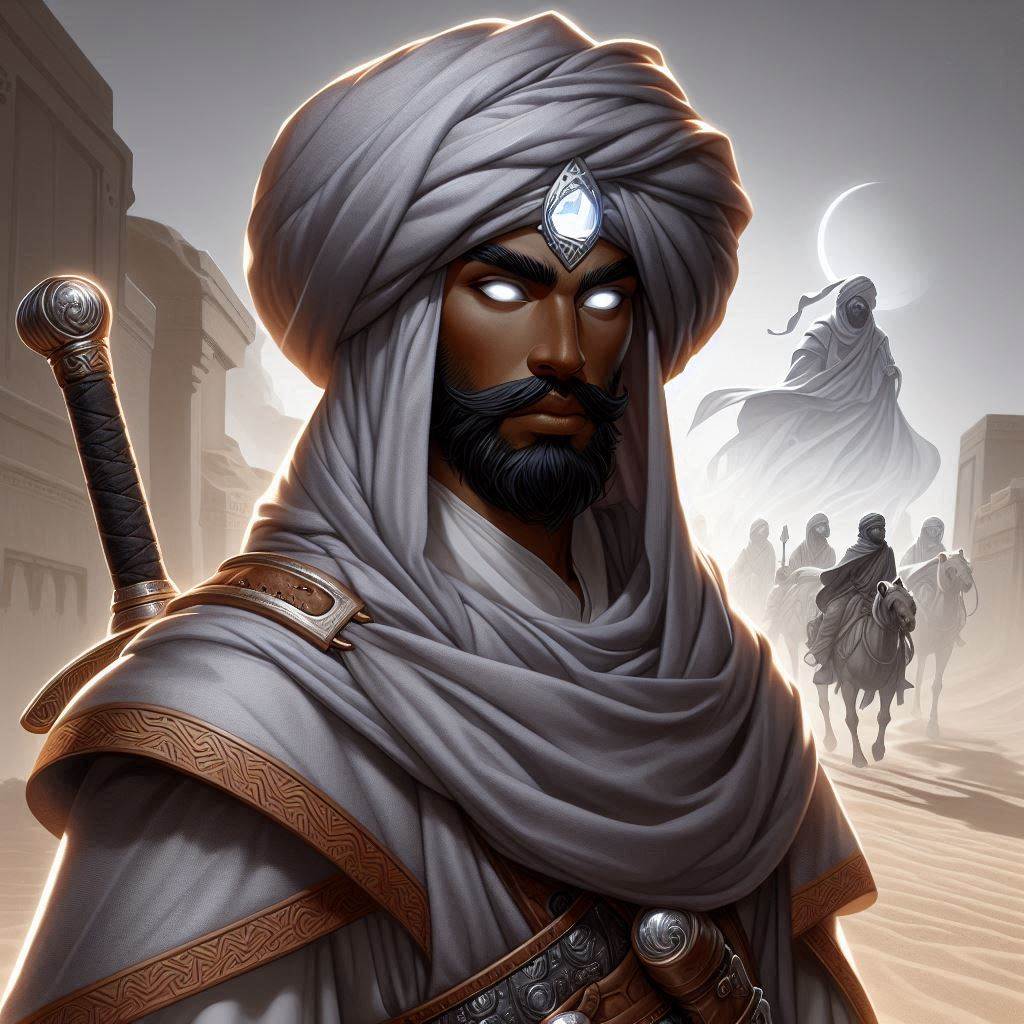
¶ al-Haj
Alignment: Lawful Neutral
Symbol: A Sixteen-spoked wagon wheel, one spoke for each of the Outer Planes
Portfolios: Death, the recently deceased, Travel, and Travelers
Titles: The Great Caravan Master, The Sultan of Shadows
Doctrine: Help all travelers on their journeys, to wherever they may be. Help the dead pass on to their eternal destination, without unnaturally speeding them along. Slay those that deserve it, but do not hurry souls along their path prematurely without great need.
Domains: Death, Trickery, Grave
Al-Haj, the Great Caravan Master, was already the god of Travel for ages when he took it upon himself to begin helping souls along to the afterlife, as the then-god of Death Necrodeus was more interested in dragging the world into a state of forced undeath. Eventually, he hunted down and slew Necrodeus, as much as a god of Death can die, and took over the portfolio of Death for the good of the world. Upon death, most souls are instantly transported to one of the sixteen outer planes that best suits their alignment, beliefs, and actions in life. For those whose fate remains undetermined at death, or whose life is cut untimely short, al-Haj’s caravan wanders the Shadowfell and the Outlands, offering souls guidance and succor even as the Shadow Sultan and the Kisme Moira finish weighing out their deserved end destination, before conveying them hence. His established campsites and waystations throughout the planes remain safe neutral ground for all travelers, both living and dead. Al-Haj appears as a great desert warrior swathed in grey robes with a bejeweled turban that glows with a ghostly silver light, and scimitar sheathed at his side, surrounded by gentle sirocco winds. To mortals, he may appear as a swarthy, robed traveler with a trim beard and dusty turban of Hajii descent, the tribes of his mortal descendants. In their ancient dialect, haj means journey or pilgrimage, leading scholars to debate whether the people or the deity first used the moniker.
¶ The Almsfather
Alignment: Chaotic Good
Symbol: Open hands, or a wooden or clay alms cup or bowl
Portfolios: Mercy, Charity, Kindness, Benevolence, Sharing, Monks, Thieves that rob from those that have much and share with those that have little, and the Poor
Titles: The Beggar King, Father Chartiy, The Humble Wanderer
Domains: Light, Trickery
Doctrine: All are deserving of life, liberty, and happiness, regardless of birth, ability or station. Give to those in need, even at the cost to oneself.
Often considered a weaker deity due to his patronage, the Almsfather nonetheless receives wide worship from the poor and downtrodden of the world. He appears as a poor mendicant, beggar, or monk, most often human but also known to appear as a dwarf, halfling, and others. His followers often take vows of poverty, giving away or selling nearly all they acquire to aid the poor; however, the most devout of his followers receive divine blessings in exchange for their sacrifice, making them surprisingly formidable defenders of the downtrodden. Formerly the god of Law and Justice as well, they were taken from him in a bit of divine legal trickery by Principius Maximus ages ago, breaking his mind and erasing his name from history. With the exposure and fall of Principius Maximus by the mortal Ahasitari, he regained some of his memories, but was happy to allow his former portfolios to go to the newly arisen Ahasitari. Husband to the Blue Lady, he allows himself to go home and rest in her arms four times a year on the solstices and equinoxes.
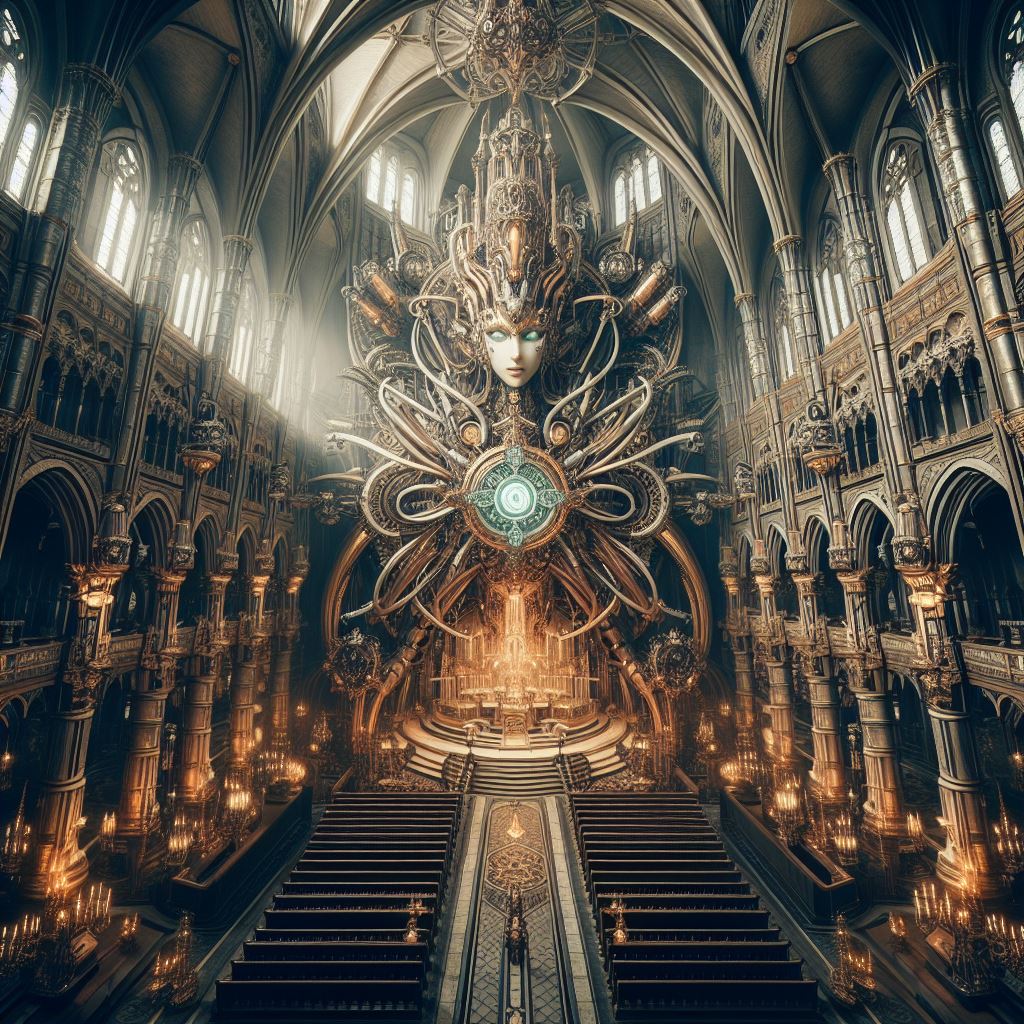
¶ Aria
Alignment: Lawful Good
Symbol: A bright steel gear with a flame of white light burning in the middle.
Portfolios: Order, Civilization, Technology
Titles: The Bright Empress, The Steel Empress
Doctrine: Work hard to advance the light of Civilization and advance understanding. Drive back the forces that would work against civilization.
The most recent deity of the Divine Compact, Aria Arigulus, Eighth of her Name, only recently reached apotheosis through the concerted efforts of her combined peoples to raise her up. During the Second Eidolon War, she arose from hiding within the Dread Empire to reclaim her birthright and cast down the infernal order that had reigned for over two hundred years. Re-christening it the Bright Empire, she was the first to undergo the Rite of Naturalization, mystically realigning herself as a native of Quinternia, gaining Eidolon status, and leading her people at the Battle of Vergence. Afterward, she presided over years of peace, seeking to revive worship of the empire’s ancestral gods from before it had arrived on Quinternia, before a visit from Klyntar the Gatekeeper altered the trajectory of her plans. Gathering her most trusted advisors, they developed a plan to devote the resources of the empire toward creating a new deity, devoted to the empire and its peoples. Through a mix of divine research, cutting-edge technology, and propaganda-inspired public devotion, Aria slowly evolved from a benevolent empress into a technological idol at the center of their capital. Unique among deities, she maintains a physical presence on the material plane, a vast, cybernetic shrine, while she enjoys equal status as a deity of the pantheon.
¶ Belamborn
Alignment: Neutral
Symbol: Trade tools, such as a hammer, shovel, scythe, etc.
Portfolios: Workers, artisans, farmers, and other non-adventuring types
Titles: God of an Honest Day’s Labor, God of Keeping One’s Head Down, Coward’s Prayer
Doctrine: Work hard, enjoy the simple life, don’t be a hero. Offer help to those that could use an extra hand. Function over form.
Domains: Life, Nature, Forge
Quiet, unsung in public, and one of the most widely prayed-to deities in Quinternia, Belamborn is the ultimate god for the masses, who keeps the fields planted and harvested, the forges and ovens hot, and the fences mended. He appears as any kind of laborer, most often a farmer, with leathery skin, calloused hands, always covered with straw, dirt, sawdust, or whatever may be appropriate for his current trade. He’s said to show up in disguise whenever a hard-working farmer needs an extra hand for the season, or a blacksmith could really use an extra apprentice to work the bellows.
¶ Bezzelendor
Alignment: Lawful Evil
Symbol: A huge pile of coins or a full purse; a golden scepter.
Portfolios: Wealth, Commerce, Greed, Merchants, Treasure-Hunting
Titles: Golden Self, Chairman of the Board, Merchant to the Masses
Doctrine: The acquisition of wealth is vindication of one's worthiness to own it.
Domains: Knowledge, Trickery
Patron of moneylenders, currency exchangers, and sanctioned consolidation (upward redistribution) of wealth to those worthy of possessing it. Though personified most often as male, he appears as a wealthy elite festooned with riches, often appearing to the viewer as a fantastically wealthy and successful version of themselves. Though technically evil, he acquired the necessary divine writs from Principius Maximus, purchased via substantial mundane, magical, and divine contributions, to join the original pantheon, and avoid being labeled as a Dark God. Since Principius Maximus’s fall, he had fallen out of favor with the rest of the pantheon, was cut out from the Divine Compact by Ahasitari’s refusal to include several choice loopholes he requested, and had been labeled Dark, his followers driven into secrecy. Still, given their hefty purses, the Cult of Bezzelendor remained a pervasive yet shadowy organization throughout civilized domains across the world. During the Second Eidolon War, and much to the shock of the Emissaries of Ahasitari, the White Lady allowed him to sign the recently amended Divine Compact and rejoin the pantheon, affording his followers official status. Today, Bezzelendor remains a popular deity amongst merchants, businessmen, land lords, and criminal gangs.
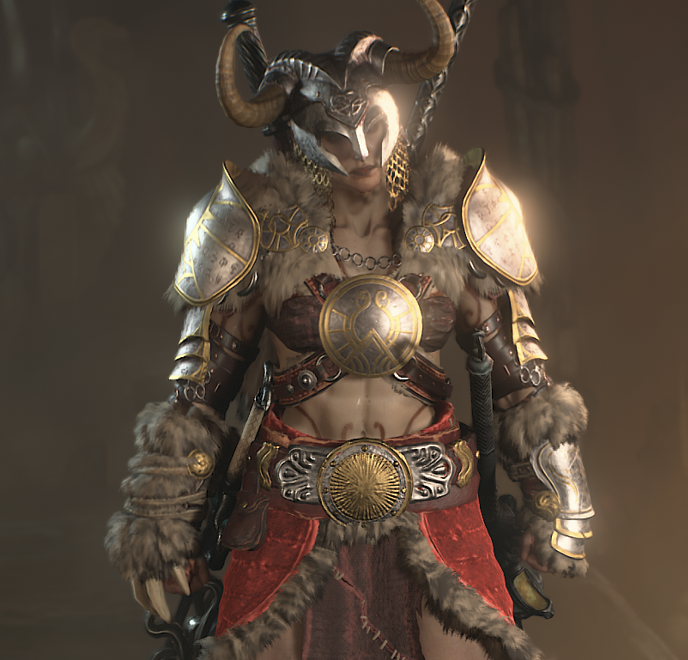
¶ Isthalia
Alignment: Chaotic Neutral
Symbol: A finely made, battle-ready weapon, most often a sword or axe, adorned with draconic imagery
Portfolios: War, Revelry, Sex, Dragons
Titles: Red Lady, Lady of new Experiences, The Bloody Berzerker, the Lady of the Three F’s
Doctrine: Bravery, Enthusiasm, Consent, and Good Form in Love, War, and Revelry
Domains: Tempest, War
Patron of warriors, mercenaries, berserkers, gladiators, prostitutes, brewers, and many more, Isthalia is often referred to as the Lady of the three F's: Fightin', Feastin', and F(fff)ornication!, though she embraces this title anyway. It's said her patronage is the reason why dragons can mate with anything. While she loves a little blood and some broken bones, she considers wholesale slaughter as bad as cowardice. She detests assassination, but loves a good sucker punch, so long as it doesn't end a fight too quickly. For her, the biggest sin is Bad Form, resulting in a fight ending quickly or in a heavily one-sided manner. It’s said she maintains a rough balance by aiding in conception of a new baby every time someone dies in battle, though she doesn't keep a careful accounting. Her worshipers are often called the Passionista. She vehemently opposes forced intimacy and the killing of foes that have surrendered and non-combatants, and will often aid those that fight back against it. Those that would rape and pillage after a battle quickly find her favor has been bestowed upon their enemies. She most often appears as a powerful warrior with heavy plate armor on the forearms, shins, shoulders, and head, but with a scantily clad torso, favoring fur and chainmail. When battle is done, she can appear as anything from a tasteful courtesan to a ribald barmaid to a handsome rake, though one constant in all forms and genders is her red-gold mane of hair. She most often appears as female, though will appear as male when she chooses.
¶ Laurelethe
Alignment: Neutral Good
Symbol: A lamp or lantern with a blue-white flame
Portfolios: Healing, Rest, Peace, Hospitality, Mothers, Innkeepers, and Resurrection
Titles: The Blue Lady, Proprietress, Madame Innkeeper
Doctrine: Food to the Hungry, Rest to the Weary, aid to Mothers and Children
Domains: Life, Light
Widely revered, of all the gods, Lauralethe has the fewest detractors. Wife of the Almsfather since before his fall as the former god of Law and Justice, she always awaits his return, lighting her blue lantern so he can find his way back to her. She appears most often as a beautiful, ageless matron in a glowing blue robe, holding a lantern, though often disguises herself as a middle-aged woman keeping an inn, always with a hint of blue silk amidst her otherwise plain, worn clothing. Her followers almost always run some sort of shelter, whether a reasonable inn, travel waystation, orphanage, or poorhouse, the most favored of which display a blue flame outside to let travelers know of the welcome found inside. With the fall of Principius Maximus during the Reordinance, she also regained the portfolio of Resurrection, though she is careful about doing out such a boon.
¶ The Omninence
Alignment: Neutral
Symbol: An open tome, geometric patterns of mathematical light spilling from its pages.
Portfolios: Knowledge, Curiosity, History, and Scholarship
Titles: The All-Knowing, the Great Scholar, The Quiet Professor
Doctrine: Learn everything you can at every opportunity for its own sake. Share that knowledge widely with all that are willing, so long as it will do no harm.
Domains: Knowledge, Light
The Omnincence is personified in divine form as living thought, the perfect theorem, glowing abstract symbols that flow through the air, accompanied by a disembodied, echoing voice, echoing in both Draconic and the hearer’s native tongue. A deity with few mortal followers and little interest in the mortal realm, all but the most dedicated scholars even remember its existence in the pantheon. Durings its few documented appearances to mortals, it appears as a bookish, nerdy, distracted scholar or wizard whom can't help but bring up anecdotes for whatever topic is being discussed.
¶ Rhapsodie
Alignment: Chaotic Neutral
Symbol: Any musical instrument, or a paintbrush
Portfolios: Art, Artists, Music, Dance, Performers, Authors, Composers, Bards
Titles: The Great Patron(ess)
Doctrine: Beauty in all things, Form before Function
Domains: Trickery, Knowledge
Rhapsodie seeks to inspire artists of all forms and media, nurturing rare talent even as she encourages amateurs to create whatever appeals to them. They most often appear as an androgynous being of sublime beauty, attractive to all whom see the form, dressed in perfect costume for whatever art they will be creating or providing patronage for. Their mortal form most often appears as a poor traveling performer of preternatural talent, of either gender, though such is often at least somewhat androgynous, or as a mysterious wealthy benefactor. Her followers are most often traveling bards, and performers of all kinds offer up prayers before a show.
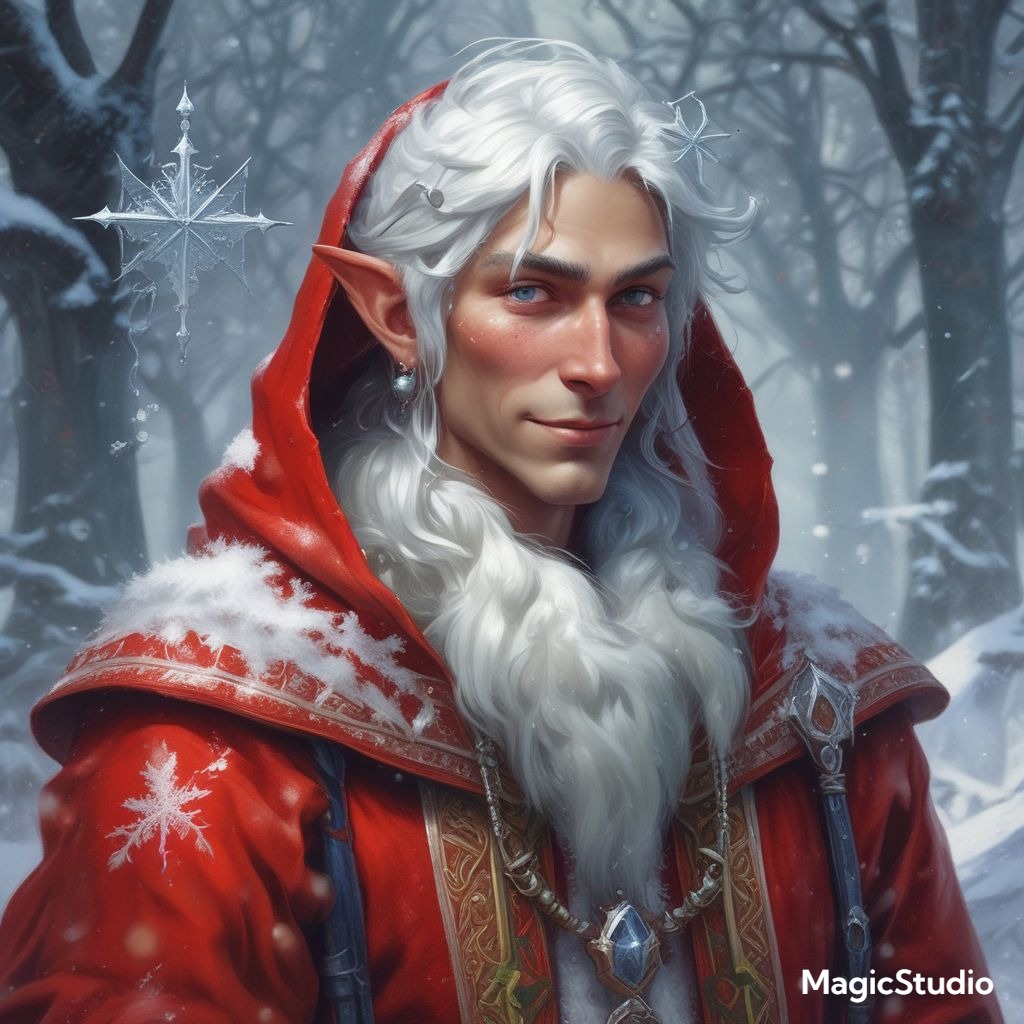
¶ Thinwe Celeb’nelidel
Alignment: Chaotic Good
Symbol: A wand, rod, or staff topped with a snowflake
Portfolios: Weather, Joy, Laughter, and those that seek adventure for the sake of it.
Titles: The Winter Elf, His Great Fickle Benevolence
Doctrine: Laugh at a good joke or prank, especially at your own expense. Find the joy in everyday things. Always say yes to an Adventure. Pay attention to sudden changes and portents in the weather.
Domains: Tempest, Trickery
One of the relatively new deities arising from the Reordinance of St. Dumon, Thinwe is a god of fickle interests but fast friendships. A former mortal companion of Ahasitari and Agrimar, he’s as likely to prank someone with a sudden fog on a battlefield as he is to create a glorious sunset for the wedding of two true loves. The domains of evil beings often find themselves shrouded in heavy thunderclouds, with violent storms being more frequent and extremes of climate more common, while societies based on benevolence often enjoy bright sunshine and milder climates. He is said to send a sudden peal of thunder to warn travelers away from danger, often earning him admonitions from Ahasitari for his borderline meddling in mortal affairs.
¶ The Kisme Moira
Alignment: Lawful Neutral, Neutral, Chaotic Neutral (respectively)
Symbol: An ornate deck of fate cards
Portfolios: Luck, Fate, and Choice (respectively)
Titles: Sisters of Fate, The Triune of What is to Come, Divine Dealers
Doctrine: Trust your Luck, Make your Choice, and Accept your Fate (respectively)
Domains: Knowledge, Trickery
The Kisme Moira are actually three goddesses, always found together, almost always in their tent or wagon within the caravan of al-Haj, appearing as sisters or different generations of the same family, working in balance to influence the fate of all mortals. One theory postulates that they are actually the same individual from different stages of her life, though most followers consider this view heretical.
- Serendipity, Goddess of Luck (Chaotic Neutral), is a beautiful but fickle young maiden, easily and equally enamored and uninterested of those she meets, sometimes both in the same conversation.
- Sovereignty, Goddess of Choice (True Neutral), appears as an equally beautiful but stately matron, patient and empathetic with those she meets, guiding them through their troubles.
- Destiny, Goddess of Design (Lawful Neutral), appears as a stately but elderly crone, straight-backed but wizened and gray, seeing through people with sympathy and acceptance but little empathy.
It's said that Serendipity and Destiny constantly argue over the fate of individuals, whether a person’s fate is predestined or the result of random happenstance, with Sovereignty serving as a quiet arbiter, and reminding the others of an individual's right to Free Will. Unlike other deities, the Kisme Moira are not so much encountered as they are visited within the Grand Caravan, often congenially bickering over the nature of the universe, always playing cards. Any mortal that meets them may ask to be dealt in to play a single hand in their lifetime. For most, this consists of an ominous and usually accurate reading of their life’s uncertainties, the choices before them, and cryptic likely outcomes. Serendipity, the young, beautiful, fickle maid, shuffles; Sovereignty, a stately matron, allows the mortal to cut the deck and asks how many they will draw; Destiny, a withered yet straight-backed crone, deals. For those steeped in their lore, they can request that their hand be dealt from “the good deck,” in this case the Deck of Many Things. In doing so, the mortal meets the convergence of fate, choosing to undergo the luck of the draw, then being lawfully bound to their fate by the consequences.
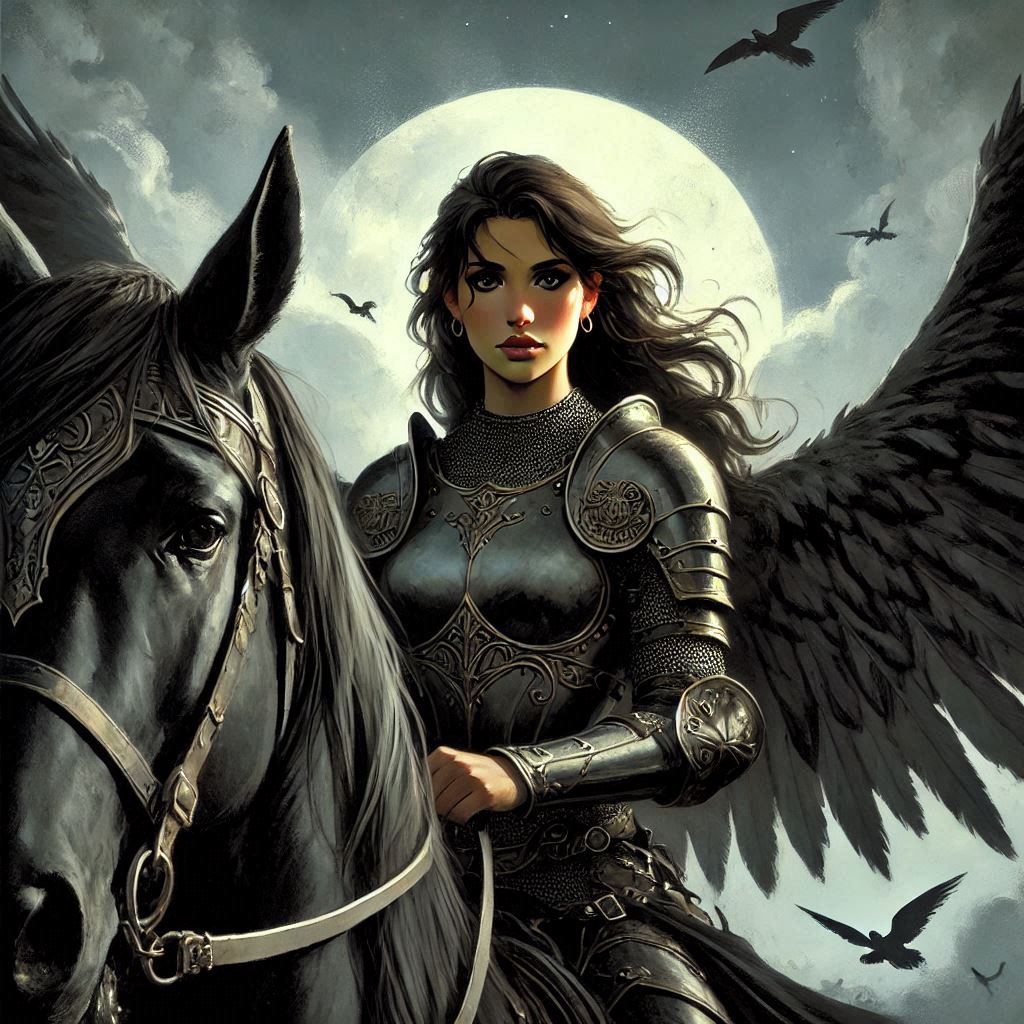
¶ Saint Tirsa
Alignment: Neutral Good
Symbol: A pair of raven wings emblazoned on a shield
Aspiring Portfolios: Death, Dreams, Memorials
Titles: The Angel of Death
Doctrine: Defend the veil separating the living and dead, bring final rest to those corrupted by undeath, memorialize great deeds of those who have passed, and perform rites to help the dead pass on to their eternal destination. Slay those who deserve it, but do not hurry souls to the afterlife prematurely without great need.
Domains: Death, Grave, War
A Great Hajii Commander of the Second Eidolon War who gathered her people from their places of exile after the Deluge. Tirsa ascended to sainthood after banishing the shade of Necrodeus to the Astral Sea and slaying her true love in order to preserve his soul from the dark god's corruption. She typically appears as an beautiful olive-skinned warrior with long raven hair, wearing dark armor wreathed in shadowy tendrils and sometimes riding a midnight steed. Tirsa often appears in portents and dreams, especially of members of the Hajii tribes or followers of al Haj. When not riding with the Great Caravan, she resides in the Twilight Citadel, a fortress between the Shadowfell and the Prime Material, at a junction of the River Styx.
¶ Waldan O’th Woods
Alignment: Chaotic Good
Symbol: A bow and arrow, wreathed in leaves, at the base of a tall tree
Portfolios: Nature above-ground, new settlements, harmony between mortals and nature
Titles: Waldan Dragonslayer, the Restorer
Doctrines: Live in harmony with nature, fight and cleanse corruption.
The youngest deity to join the pantheon, Waldan was a mortal hero of the Second Eidolon War, Eidolon of Love, slayer of L’Vreth the Black, veteran of the Battle of Vergence, and later founder of dozens of new settlements in the Reclamation. While tales of his lethal heroics and unmatched skill with a bow still resound in living memory, it was his work to help mortals reclaim wilderness while still living in harmony with nature that eventually brought him to the attention of Agrimar Dirt-Dweller, whom had been looking for someone appropriate to take the burdens of surface nature from him since the Reordinance. Even decades since his acceptance into the pantheon, his Waldan groves thrive all over the lands surrounding New Radiance and beyond, centerpieces for towns and villages that have grown up around them in harmony with the land, even as his divine hunters seek to slay dark beasts and other corrupted entities to make the wilderness safe again.